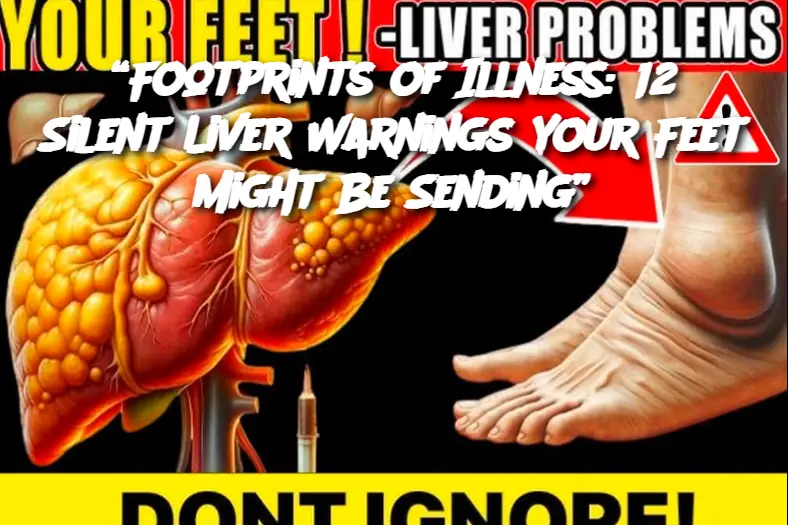-
Swollen ankles and feet
Fluid retention in the lower extremities is a classic sign of poor liver function and may indicate early liver disease or cirrhosis. -
Cracked heels
Chronic dryness and skin cracking can result from a lack of vitamin A or poor fat metabolism — both regulated by the liver. -
Itchy feet or soles
A buildup of bile salts due to liver dysfunction can cause persistent itching, especially on the soles. -
Yellowish skin or toenails
Jaundice — a yellow tint — is often first noticeable in the eyes, skin, or even under the toenails due to excess bilirubin in the blood. -
Numbness or tingling in toes
Neuropathy can occur when toxins aren’t properly filtered, a condition sometimes caused by non-alcoholic fatty liver disease. -
Dark spots or pigmentation changes
Liver imbalances can affect melanin production, sometimes causing hyperpigmentation on the feet. -
Red or blotchy feet
Liver issues can cause blood vessels to expand, leading to red patches or spider veins — especially around the toes. -
Toenail discoloration or fungal infections
A weakened immune system and poor detoxification can lead to frequent fungal issues or slow nail growth. -
Burning feet sensation
This may be linked to vitamin B deficiency, common in people with liver disease due to poor nutrient absorption. -
Foot cramps
Liver problems can interfere with electrolyte balance, leading to recurring cramps and spasms in the feet. -
Cold feet
Poor circulation and sluggish liver function can reduce blood flow to the extremities, leaving your feet constantly cold. -
Pain under the right foot
The liver meridian, according to reflexology, runs through the feet. Pain or tension in specific points may reflect internal liver stress.
« Preparation » (What to Do If You Notice These Signs)
-
Track your symptoms and note any patterns or frequency.
-
Get liver function tests from a healthcare provider if you have multiple symptoms.
-
Avoid alcohol and processed foods, which can further stress the liver.
-
Start incorporating liver-supportive foods like leafy greens, beets, lemon water, turmeric, and garlic into your diet.
-
Stay hydrated to aid natural detoxification.
« Serving and Storage Tips » (How to Support Liver Health Daily)
-
Daily lemon water first thing in the morning helps flush toxins.
-
Moderate exercise improves circulation and liver function.
-
Adequate sleep allows the liver to regenerate overnight.
-
Foot soaks with Epsom salts may relieve symptoms like swelling or pain while also delivering magnesium.
-
Use natural oils like castor oil for foot massage — believed in holistic medicine to stimulate liver detox.
« Variants » (Other Conditions That Mimic These Foot Symptoms)
-
Kidney disease can also cause swelling and tingling.
-
Diabetes may lead to numbness and slow nail growth.
-
Thyroid issues can cause cold feet and dry skin.
-
Always rule out these conditions with proper medical testing.
FAQ
Q: Are these foot symptoms a definite sign of liver disease?
A: Not necessarily. While they can point to liver stress, these signs may also be caused by other conditions. They should be taken as a signal to investigate, not a diagnosis.
Q: Can foot massages really help the liver?
A: In reflexology, certain points on the feet correspond to organs. While not scientifically proven, many find reflexology helpful for relaxation and circulation.
Q: What foods naturally support the liver?
A: Garlic, beets, leafy greens, turmeric, dandelion root, and lemon are known to support natural detox pathways in the liver.
Q: How often should I detox my liver?
A: Your liver detoxes itself daily. Focus on sustainable, long-term habits rather than short-term cleanses.
Q: Should I see a doctor for just dry feet or nail issues?
A: If those issues are persistent, worsening, or paired with other symptoms, it’s wise to speak with a healthcare provider.
